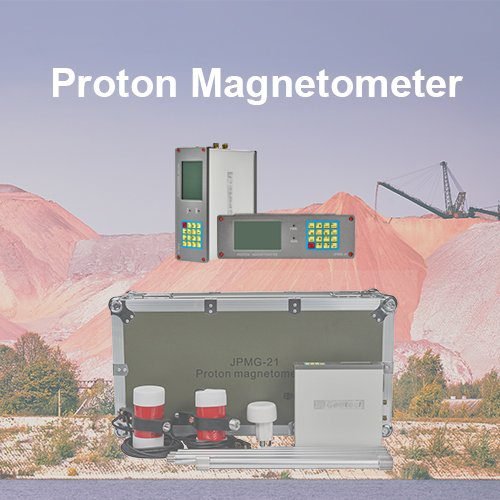Welcome to Geotech!

What Are Electrical Instruments?
I. What Are Electrical Instruments?
Electrical instruments are devices that measure the electrical properties of subsurface media (e.g., resistivity, polarizability) for geological exploration. Key methods include:
- Electrical Resistivity Tomography (ERT): Uses surface or borehole electrode arrays to reconstruct 3D resistivity distributions.
- Induced Polarization (IP): Analyzes charge storage capacity to identify metallic minerals or contaminants.
- Vertical Electrical Sounding (VES): Evaluates vertical resistivity variations by adjusting electrode spacing.
Technical Features:
- Multi-parameter integration: Modern systems like Syscal Pro synchronize resistivity (ERT) and polarizability (IP) measurements with a 120dB dynamic range.
- Depth adaptability: Covers shallow layers (0.1–30m, high-density methods) to deep exploration (>1km, cross-hole ERT).
- AI-driven advancements: Inversion algorithms (e.g., E4D software) reduce imaging errors to <5%.
II. Comparison with Other Geophysical Methods
1. ERT vs. Ground Penetrating Radar (GPR)
| Aspect | ERT | GPR |
|---|---|---|
| Depth range | 10m–1km (electrode spacing dependent) | 0.1–30m (limited by medium conductivity) |
| Resolution | Moderate (algorithm-dependent) | High (centimeter-level) |
| Optimal scenarios | Groundwater contamination tracking, karst collapse detection | Shallow utility detection, archaeology |
| Interference resistance | Less affected by metal pipes/EM noise | Severe signal attenuation in conductive media (e.g., clay) |
Collaborative case: In landfill leakage detection, ERT maps contaminant plumes spatially, while GPR pinpoints leakage points.
2. VES vs. Seismic Exploration
| Aspect | VES | Seismic Exploration |
|---|---|---|
| Physical parameter | Layered resistivity profiling | Elastic wave velocity (P/S-waves) |
| Cost efficiency | Lightweight equipment, rapid deployment | High cost due to energy source requirements |
| Advantageous scenarios | Aquifer thickness assessment, bedrock interface identification | Deep hydrocarbon reservoir imaging |
Data fusion: In landslide monitoring, VES tracks groundwater fluctuations, while seismic surface waves assess rock shear strength.
III. Core Technologies & Applications
1. 2D vs. 3D Resistivity Imaging
- 2D ERT: Linear electrode arrays for rapid fault/tunnel surveys, cost-effective but resolution-limited.
- 3D ERT: Grid-based arrays generate volumetric models for complex geology (e.g., karst collapse), requiring advanced computational resources.
Case study: A coal mine applied a 120-channel 3D ERT system to map groundwater pathways in mined-out areas.
2. High-Density Electrical Method
- Technical breakthroughs:
- Automated electrode switching supports hybrid arrays (Dipole-Dipole, Wenner), improving SNR by 40%.
- Lightweight cables (IP68-rated) enable flexible 56-electrode configurations for coastal saline environments.
3. Cross-Hole ERT
- Deep exploration: Overcomes terrain limitations for geothermal reservoir monitoring (Ag/AgCl non-polarizable electrodes minimize noise).
- Case: A tunnel project used borehole-to-surface ERT to locate hidden faults.
IV. Data Inversion & Error Control
1. Inversion Algorithm Comparison
| Method | Advantages | Limitations |
|---|---|---|
| Smoothness-constrained inversion | Efficient for layered structures | Blurs sharp boundaries (e.g., rock veins) |
| Structural-coupled inversion | Enhances deep resolution via seismic/ERT fusion | Requires multi-source calibration, computationally intensive |
2. Primary Error Sources
- Electrode contact resistance: Preprocess data to eliminate abnormal potential points.
- Anisotropic media: Current path deviations necessitate anisotropic model corrections.
V. Engineering Practices & Future Trends
1. Typical Applications
| Industry | Case | Technical Recommendations |
|---|---|---|
| Environmental | 3D groundwater contamination mapping | 3D ERT + hydrogeological validation |
| Mineral Exploration | Sulfide ore boundary identification | IP/ERT fusion + magnetic surveys |
| Urban Engineering | Subway tunnel void detection | High-density ERT + GPR real-time imaging |
2. Innovation Directions
- AI-driven interpretation: CNNs reduce inversion ambiguity (error <5%).
- Drone-deployed ERT: Lightweight systems for rugged terrains.
- 4D time-lapse monitoring: Quantifies dynamic subsurface changes (e.g., groundwater flow).
Conclusion
Electrical instruments like ERT, IP, and VES are indispensable in modern geotechnical surveys due to their adaptability and multi-physics integration. By combining these methods with complementary technologies (e.g., GPR, seismic), engineers achieve unparalleled accuracy in environmental, mineral, and urban projects.
【Intelligent exploration equipment recommendation】
Unlock New Heights in Geophysical Exploration: Geotech GIM Series High-Density Resistivity and IP Testing System
As a leading multi-functional electrical exploration device, the GIM Series integrates natural potential measurement, 1D/2D/3D resistivity imaging (ERT), and induced polarization (IP) capabilities. With 24-bit high-precision A/D conversion and bi-directional cascading technology, it breaks traditional electrical exploration depth limitations, achieving 1,500-meter penetration. The IP67 waterproof design and wide operating temperature range of -20°C to +60°C ensure stable performance in extreme environments.
Key Advantages
✅ Multi-Scenario Adaptability: From groundwater pollution monitoring to ore body location, it supports cross-hole, underwater, and 3D distributed cabling.
✅ Intelligent Efficiency Boost: 10-channel synchronous acquisition + rolling measurement mode captures multi-electrode data in a single setup.
✅ Data Compatibility: Exports TXT/Excel formats compatible with mainstream inversion software (Res2DInv, EarthImager).

Discover How the GIM Series Can Revolutionize Your Projects
Learn more about the GIM Series and how it can overcome geological exploration challenges:
https://geotechcn.net/products/electrical-instrument/gim-1-single-channel-intelligent-resistivity-ip-meter%e4%b8%a8high-density-resistivity-tester/
(Click the link to access technical specifications, application case studies, and global support services.)
-1.png)


